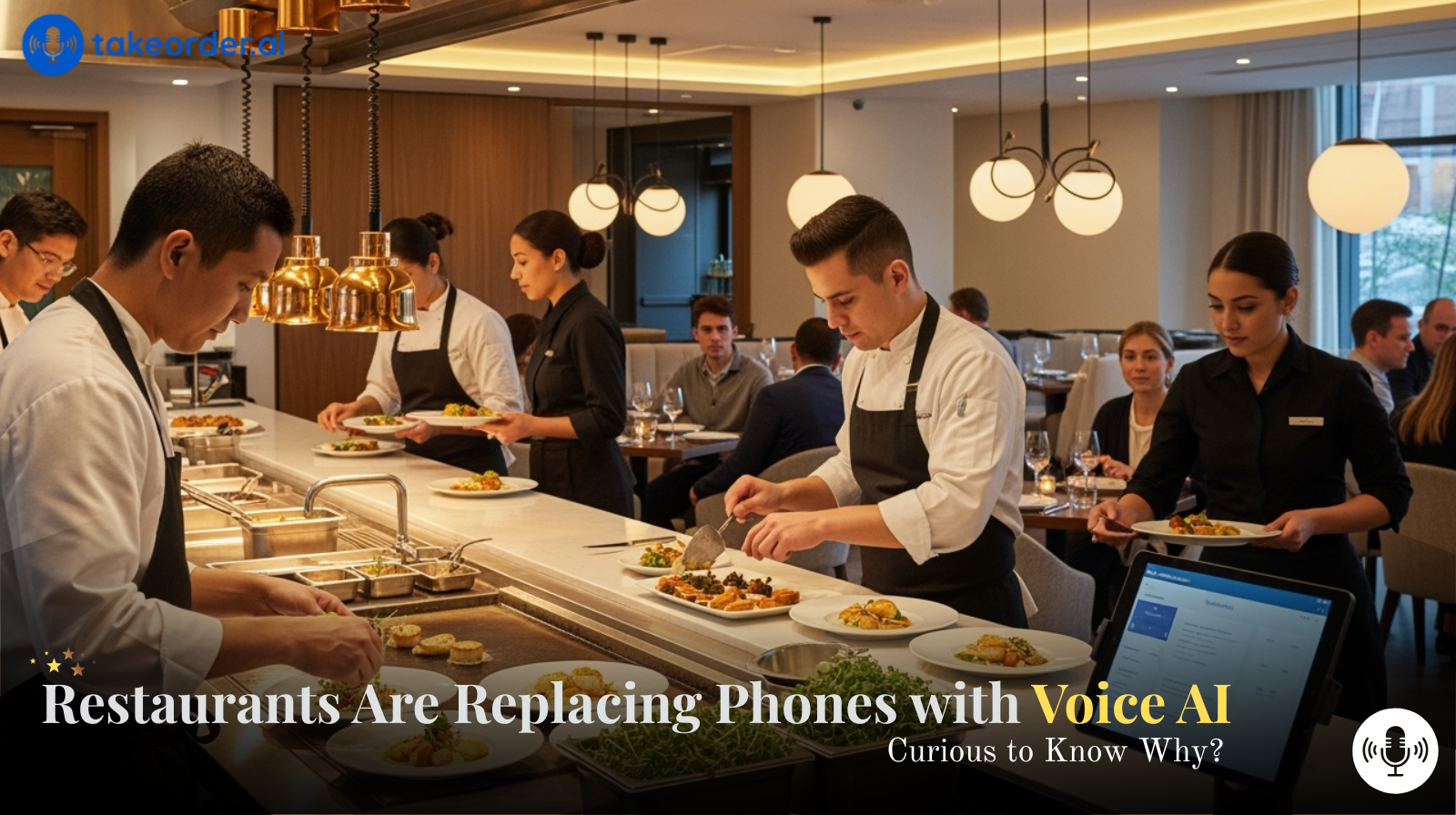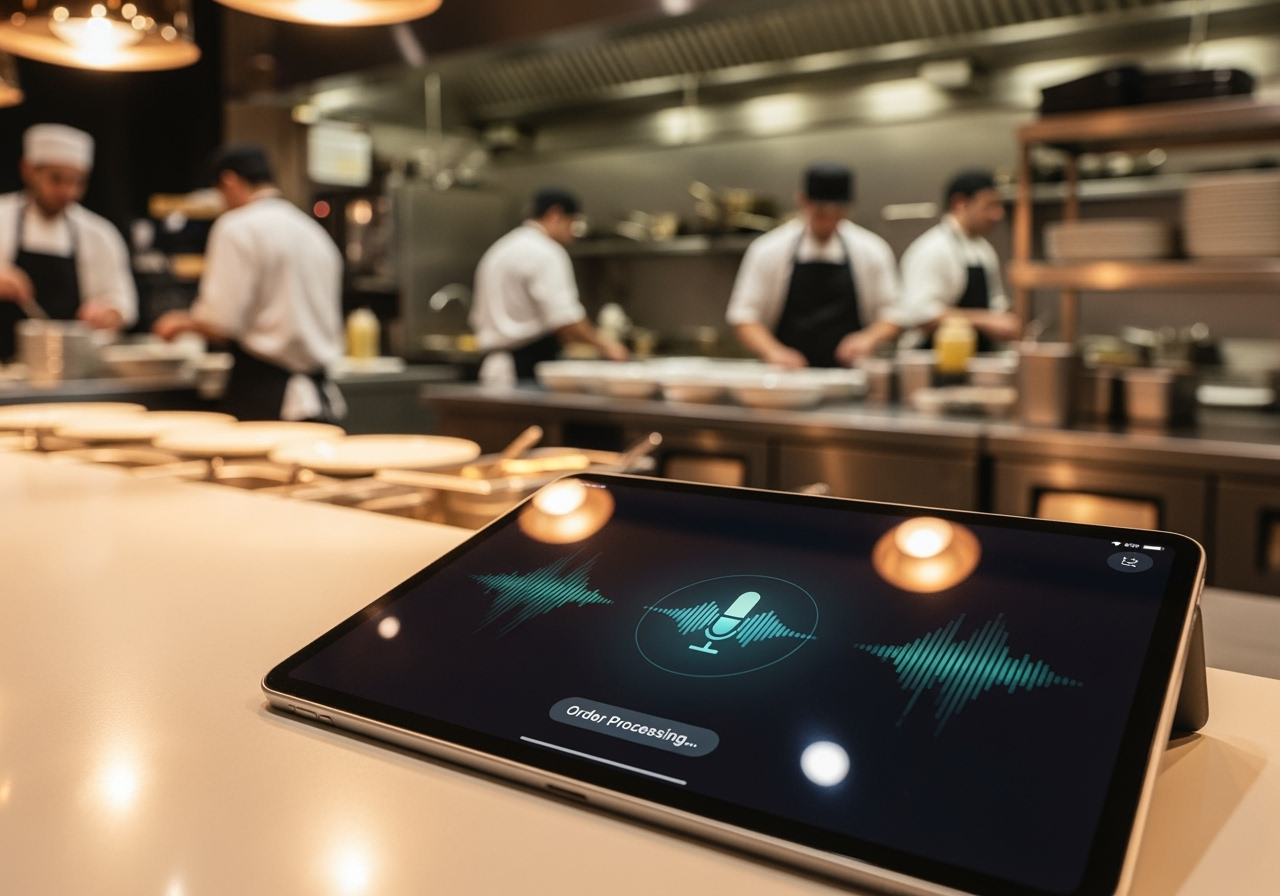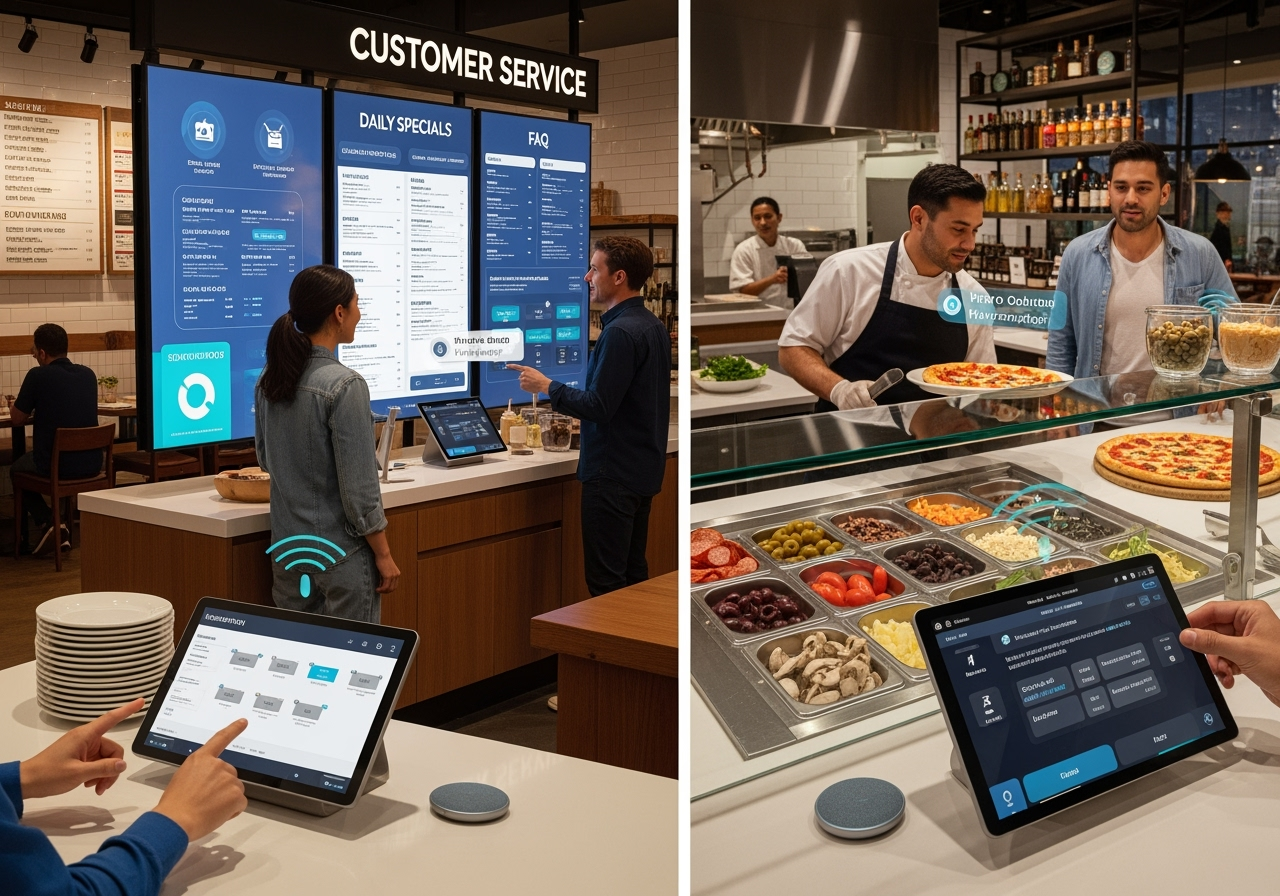
The restaurant phone system is becoming a relic of the past.
Picture this: it's lunch rush, orders are flying, and that phone just won't stop ringing. Staff are scrambling between customers, food prep, and answering calls – and somewhere in that chaos, potential revenue is slipping away.
But something interesting is happening across the restaurant industry. More establishments are discovering that voice AI technology offers a solution that seemed impossible just a few years ago.
Restaurant phone systems have always been a double-edged sword. They bring in orders, but they also create bottlenecks that can cripple operations during busy periods.
Common phone system challenges include:
The reality is that traditional phone systems weren't designed for modern restaurant operations. They require constant human attention at exactly the moments when staff need to focus on food quality and customer service.

Voice AI for restaurants represents a fundamental shift in how food establishments handle customer communications. Unlike traditional automated systems that frustrate callers with endless menu options, modern voice AI creates natural conversations that feel genuinely human.
Key features of restaurant voice AI include:
The technology has evolved to handle complex food orders with modifications, substitutions, and special requests – all while maintaining the friendly, helpful tone customers expect from their favorite restaurants.
When restaurants implement voice AI systems, the changes go far beyond just answering phones. The technology creates ripple effects throughout the entire operation.
Staff liberation becomes the most immediate benefit. Kitchen teams can focus on food quality without constant phone interruptions. Front-of-house staff can provide better in-person service when they're not rushing to answer ringing phones.
Operational improvements typically include:
The Phone AI solution demonstrates how voice technology can handle everything from simple takeout orders to complex catering requests without missing a beat.
From a customer perspective, voice AI often provides a superior experience compared to traditional phone systems. There are no busy signals, no hold music, and no rushed interactions with stressed staff members.
Customers can place orders at their own pace, ask questions about ingredients or preparation methods, and receive consistent, accurate information every time. The AI remembers previous orders and preferences, creating a personalized experience that builds loyalty.
Customer benefits include:
For restaurants serving diverse communities, multilingual voice AI capabilities ensure that language barriers don't prevent customers from enjoying their favorite meals.
The transition to voice AI doesn't require a complete overhaul of existing restaurant systems. Modern solutions integrate seamlessly with current POS systems, online ordering platforms, and reservation management tools.
Implementation typically involves configuring the AI with restaurant-specific information like menu items, pricing, hours of operation, and special policies. The system learns from each interaction, becoming more efficient and accurate over time.
Integration considerations include:
The Drive-Thru AI and Kiosk AI solutions show how voice technology adapts to different restaurant formats and customer interaction points.

Advanced voice AI systems handle much more than simple food orders. They manage reservations, answer frequently asked questions about hours and locations, provide nutritional information, and even handle special event bookings.
The technology excels at managing complex scenarios that traditionally required experienced staff members. For pizza restaurants, the Pizza AI solution demonstrates how voice technology handles intricate customization requests with multiple toppings, crust options, and size variations.
Advanced capabilities include:
Restaurants that embrace voice AI technology gain significant competitive advantages in today's market. They can handle higher call volumes without additional staffing costs, maintain consistent service quality during peak periods, and capture orders that competitors might miss due to busy signals or overwhelmed staff.
The technology also provides valuable data insights that help restaurants optimize their operations, understand customer preferences, and identify growth opportunities.
Voice AI technology continues evolving, with improvements in natural language understanding, accent recognition, and integration capabilities. Restaurants implementing these systems now position themselves at the forefront of industry innovation.
The transformation isn't just about technology – it's about reimagining how restaurants can serve customers more effectively while supporting their staff and growing their business.
Ready to explore how voice AI can transform your restaurant?
Book a demo to see the technology in action and discover why so many restaurants are making the switch to intelligent voice systems.
Stay updated on our news and events! Sign up to receive our newsletter.
Thank you for signing up!
Something went wrong. Please try again later.